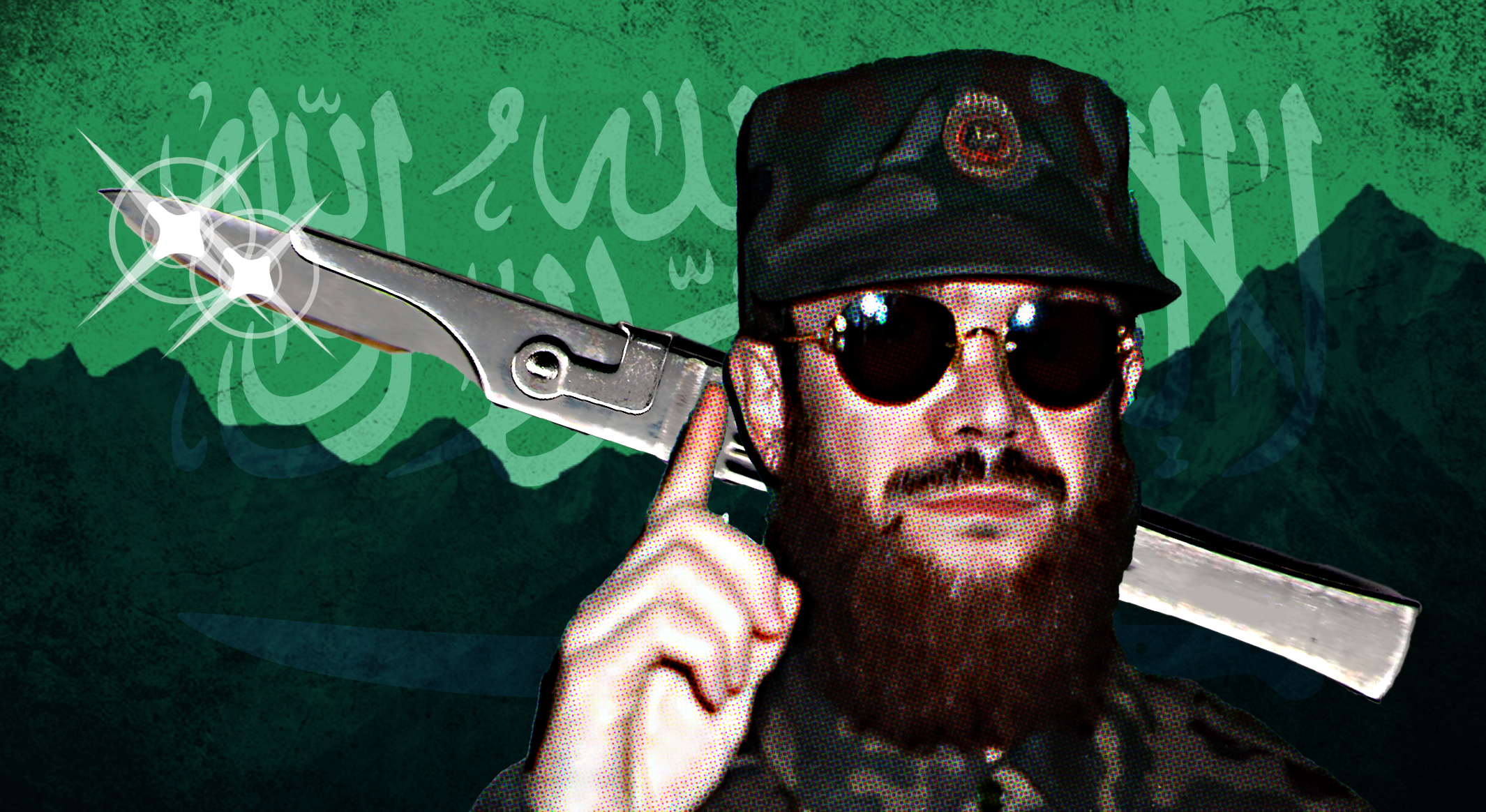The featured artwork for our article focusing on the Michael Jackson of Chechnya (called so due to the extensive plastic surgery he received after a bullet to the face) was kindly created by the highly skilled Olivier Ballou. You can find more of his work here.
The gruesome modern history of Chechnya has created an array of unique bizarre, and fearsome characters. In the past, we’ve covered infamous Chechen warlords such as Shamil Basayev who was known as Russia’s Bin Laden. Today, we’re going to look at one of the more bizarre warlords who surfaced during the Chechen Wars: Salman Raduyev who was known as ”The Michael Jackson of Chechnya”.
The story of Chechnya’s Michael Jackson is seemingly beyond belief. It’s a story about a warlord who seemingly returned from the dead after taking a sniper round to the face, albeit mentally deranged. A determined fighter who launched daring operations that resulted in a full-scale war. His eventual court case saw such significant steps taken that hadn’t been seen since the Soviet case led against US spy plane pilot Gary Powers. During his trial, Raduyev would state: ‘I couldn’t care less if I get a life sentence. I have died three times already. I can spend my life in prison. I have no regrets.’
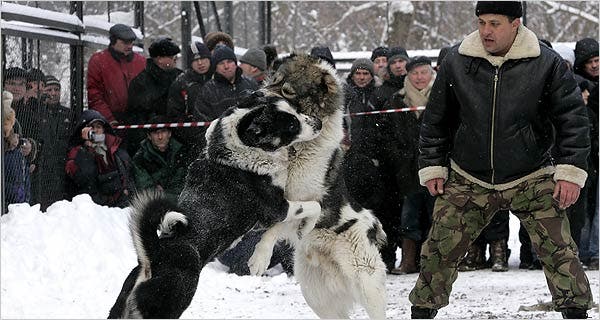
In the past two centuries, we’ve seen an untold number of ethnic groups and tribes fully assimilate or vanish entirely around the world. The Chechens are not one of them. From Peter the Great to Vladimir Putin, the people of Chechnya have waged a constant rebellion against Russia and refused to be destroyed, despite coming very close in 1944. Inevitably, every Chechen rebellion was crushed under the might of the Russian Bear. The few Chechens who survived licked their wounds, rearmed, and repopulated to prepare a new generation of fighters. The she-wolf is a symbol of the Chechen people and the mother of the first Chechens according to folklore. Throughout history, Chechen fighters have been known to strike terror into their enemies with wolf howls before launching an attack.
Modern Chechnya was engulfed in the horror of two wars that obliterated the republic between 1994 and 2009. The First Chechen War was fought between separatist Chechen rebels and the Russian military and resulted in withdrawal and short-lived independence which saw Chechnya degenerate into a Mafia State. The Second Chechen War saw the Russian military invade Chechnya again. Many former Chechen separatists joined Russian forces in order to combat the spread of fanatical Jihadist insurgents throughout the area, many of whom had come from abroad. Both conflicts were defined by widespread war crimes, brutality, surrealism, and mass destruction.
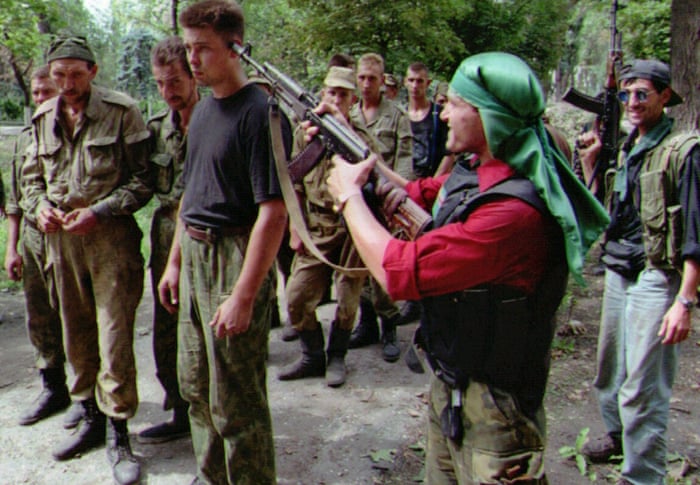
I’ve personally worked in Chechnya a number of times. Today, the country has rebuilt its physical infrastructure at a rapid pace. The psychological impact, however, remains. Through conversations with various Chechens who were active in the Chechen Wars, I’ve been able to get a deep insight into the most infamous characters to have surfaced from the rebellious region, including Salman Raduyev.
”We called him the man with two faces. Not because he talked behind your back, but because he literally had two faces. The second one looked like Michael Jackson. When he appeared alive after being shot in the face with a 7.62mm round, somebody, possibly Salman himself, sparked a rumor that he was a demon who could not be killed” my Chechen guide told me as we walked along Vladimir Putin boulevard in downtown Grozny.
Article Contents
The Birth of Chechnya’s Michael Jackson
In 1967 in what was then the Chechen-Ingush Autonomous Soviet Socialist Republic, Salman Raduyev was born just outside the Chechen city of Gudermes. As a teenager, Raduyev joined the Communist youth movement known as the Komsomol which was standard practice during the Soviet Union. A natural leader, Raduyev soon became the Komsomol leader for the whole Chechen-Ingush Autonomous Soviet Socialist Republic before going on to complete two years of mandatory service in the Soviet Army.
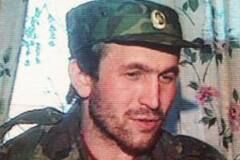
As the Soviet Union began to tear apart in the early 1990s, Chechnya was preparing to declare independence. Raduyev had married his way into one of the most powerful clans in Chechnya at the time: The Dudayev family. The head of the family was Dzhokhar Dudayev, who soon became the short-lived president of the newly created Chechen Republic of Ichkeria, and who was now Raduyev’s father in law. Raduyev would go on to draw significant authority through his close relationship with Dzhokhar Dudayev.
As the First Chechen War began in December 1994, Raduyev quickly rose through the ranks and became a field commander for the separatist Chechen forces. Over the coming months, he made a name for himself whilst taking part in the Battle of Grozny and during a raid on the city of Gudermes with his men. Shortly after this, an assassination attempt was made on his life when a bomb was left inside his house. When it detonated Raduyev wasn’t there but it killed everyone inside including his first wife and child, leaving Salman alone and enraged.
Carnage in Kizlyar
In January 1996, Raduyev reached global infamy for the first time when he took 300 fighters who were called ‘The Wolves’ behind enemy lines in an operation to attack a Russian Army helicopter base in the town of Kizlyar, Dagestan which is located around 70 miles from Grozny. Many security advisors claim the operation was planned by an Islamist foreign fighter from Pakistan who had fought in the Soviet-Afghan War. The attack on Kizlyar was designed to outdo Shamil Basayev’s infamous raid on Budennovsk the year before. However, Raduyev’s operation soon descended into all-out carnage.
Wolves have come to you!
Raduyev’s war cry as he attacked the air base
Raduyev’s attack on Kizlyar began to fall apart early on as a Russian counter-attack force responded. The Chechens copied Basayev’s tactics and seized a four-story hospital and took 2,000 patients inside, as well as people living in apartments nearby, hostage. 78 of whom were subsequently executed to force the Russian attack to halt and negotiate to allow the Chechens to return back to Chechnya unharmed. With no other option, the Russians arranged 11 buses and 2 lorries to take the Chechen rebels and a number of hostages, including voluntary high ranking Dagestani officials who volunteered as hostages to defuse the situation, back to Chechnya.
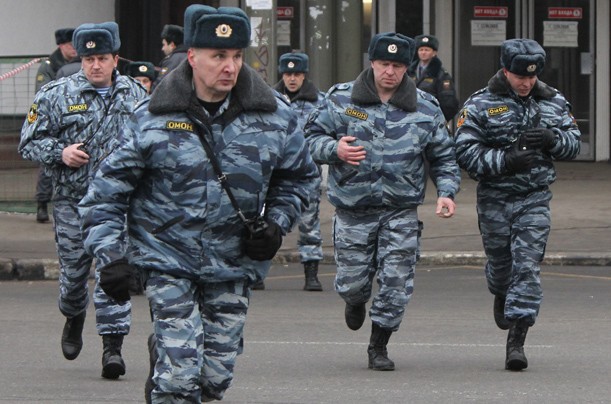
As soon as the convoy crossed the Chechen border the hostages were supposed to be released. But there was confusion between what was originally agreed. The Russian military, keen to avoid a repeat of the finale of Budenovsk, launched a poorly coordinated barrage of warning fire on the convoy. In the chaos, the convoy reversed back into Dagestan and took positions in the village of Pervomaiskoye where they captured over 35 Dagestani militia as well as a local armory full of weapons and ammunition. Russian FSB reported that the Chechens were murdering hostages in the village which prompted the Russian military to mobilize a force twenty times bigger than the Wolves and advance on Pervomaiskoye to wipe out the rebels once and for all.
Grad strikes, Hind gunships, fighter jets, and heavy machine-gun fire eviscerated the village in an intense barrage before the Russian military moved in. The Chechens had been listening in on Russian radios and were able to shelter during most of the artillery strikes. Raduyev and his men dug trenches and tunnels in the night in order to survive. The Russians took enormous losses from the entrenched Chechens who were prepared to fight to the death in the village. Over the next 82 hours, the Chechens fought off 22 Russian attacks. As the carnage grew many Russian troops were killed as their own artillery and missiles smashed into their positions by mistake. 15 of the hostages were killed by both sides in the frenzy.
Back in Grozny, the Chechen government was dispatching a relief force to recover the surviving Chechen fighters who were not easily replaceable. Hundreds of fighters entered Dagestan and launched attacks to divert Russian forces and allow the besieged Chechens in Pervomaiskoye to break out. Some fighters martyred themselves by staying behind to cover the retreat. Hostages were utilized to carry wounded fighters and some even picked up rifles to defend themselves from Russian troops during the withdrawal as the firing was so indiscriminate. Sixty Chechen fighters were killed during the retreat across minefields and relentless fire but Rudayev made it back to Chechnya with what was left.
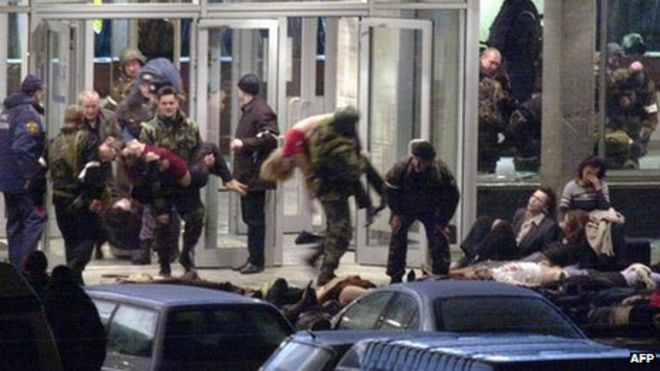
Raduyev’s actions had made headlines around the world and he was now known as a warlord and the second most wanted man in Russian after Shamil Basayev. Raduyev enjoyed the infamous image the press painted of him. The attack on Kizlyar created his reputation, but it was the last operation of any importance that Raduyev would carry out. However, in the violent strewn world of the 1990s era North Caucasus, Raduyev began attaching his name to various audacious crimes and attacks that were unclaimed in order to maintain his fearsome reputation.
The global infamy came at a price. Raduyev had made a string of powerful enemies through his raid on Kizlyar. In Chechnya, figures like Aslan Maskhadov and Shamil Basayev were infuriated that an unsanctioned raid had led them to throw manpower and resources into Dagestan in order to rescue it. Russia now firmly had Raduyev in their sights due to the sheer embarrassment of the recent battle. Dagestani tribal leaders had enacted a series of blood feuds and vendettas on Raduyev due to the death and destruction he had brought upon Dagestan.
The First Death of Salman Raduyev
Five weeks after the attack on Kizlyar, an ambush was launched on Salman Raduyev as he drove his car. He suffered a clean headshot when a 7.62mm round entered his cheek and exited through his left eye essentially blowing most of his face off. He was reported to have later died in a hospital in the Chechen city of Urus-Martan. Whether the Russians or the Chechens carried out the ambush in revenge for the raid on Kizlyar remains unclear.
Four months after he was shot in the head and reported dead, Raduyev returned from the dead. Albeit with a monstrous face that had been reconstructed through plastic surgery and was half obscured by aviator sunglasses. Raduyev had been declared dead to ‘trick Russia and his enemies’ before being smuggled to Turkey for recuperation and then Germany for plastic surgery where he was forced to sign an agreement not to murder his plastic surgeons if the operation went wrong. Such are the caveats of being a warlord. Some reports claim that Raduyev was treated in a facility run by the German Federal Intelligence service (BND) whilst another bizarre claim stated that Raduyev’s plastic surgeon was the same doctor who treated Michael Jackson.

With a face defined by plastic surgery and Titanium plates, Raduyev was now being called two nicknames: the ”Michael Jackson of Chechnya” and the ”Titanic”. Before his disappearance, Raduyev had possessed a predatory look, emphasized by a strong nose, a flowing red beard, and classic gold teeth synonymous with the Caucasus. The Raduyev who returned had dark sunglasses sitting atop an artificial nose that resembled that of Michael Jackson. The Aviator sunglasses covered an empty eye socket and catastrophic damage to his skull caused by the assassin’s bullet.
Personally, the names of the Titanic and Michael Jackson of Chechnya upon Raduyev’s return from death is such a wasted opportunity. Terminator 1 and 2 were released in 1985 and 1991 respectively and would have made a far more fitting and fierce title for a man composed of titanium and who seemingly couldn’t be killed. The idea of battalions of heavily armed Chechen rebels watching the Titanic does paint a quirky image in the mind, however.
As the days passed following the warlords return, the men who knew him well noticed something had changed. Consistent with a cranial trauma like the one he received, the Raduyev that returned was now displaying clear signs of mental illness.
The Second Death of Salman Raduyev
During the time he spent ‘dead’ Salman Raduyev had missed one of the most critical moments in Chechen history – the death of his father-in-law and separatist president Dzokhar Dudayev who had been wiped out by two laser-guided missiles when Russian reconnaissance aircraft found his location when he made a call on his satellite phone. However, with a penchant for faking his own death combined with a worrying mental state, Raduyev refused to accept that Dudayev was dead. He insisted on the return of his father-in-law so much that many Chechens began to believe him.
Raduyev’s return was rocking the boat in Chechnya for all sides. He was making enemies and starting blood feuds left, right, and centre. The bounty placed on his head by Russia meant there was a queue of people waiting to take him out. Between April and July in 1997, there were a range of assassination attempts that came close to killing him from van bombs to firefights on the streets of Grozny. The following video shows the aftermath of one of the attempts on his life and his recovery in hospital:
With a new lease of life, Raduyev accepted the death of Dudayev and began to make a series of threats against Russia, promising a wave of bombings to mark the anniversary of Dudayev’s death which he called ‘a day of national revenge’. However, this went down worse in Chechnya than it did in Russia as it clashed with the separatist efforts to present a united front in order to establish a legitimate Chechen state and a peace agreement with Russia.
In June 1997, then Chechen President Aslan Maskhadov decreed the abolition of all private armies in Chechnya which was largely aimed at Raduyev and his army of over 1,000 men, two battle tanks, and numerous APCs. The next month a van bomb targetted Rudayev’s car in Grozny. He survived the attack although three people around him were killed.
With this commander, we don’t have a political problem, we have a psychiatric one.
Aslan Maskhadov talking about Salman Raduyev
By this stage, Raduyev had made enemies left, right, and center. He had threatened to ‘blow up’ an oil pipeline the Chechen government was negotiating with Russia in order to bring oil from Chechnya to Russia and bring much-needed revenue into the struggling state. He later led an anti-Wahhabist rally in Grozny, during which he threatened the militarily powerful Islamist factions led by warlords like Ibn al-Khattab with violence. If that wasn’t enough he also called the government “enemies of Allah and Islam” unless they turned on the Wahhabist militants.
At that time, however, Aslan Maskhadov was too busy to do something about Raduyev as he was too busy battling the growing evil of radical Jihadists and foreign Mujahideen who were operating in Chechnya. Maskhadov issued an expulsion order for all of the violent guests who had now outstayed their welcome. Naturally, none of them listened.

Maskhadov hit back at Raduyev and through his recommendation, the Supreme Sharia Court sentenced Raduyev to four years in jail on charges of ‘insubordination’. The first and only attempt to apprehend Raduyev failed and the charge subsequently gathered dust. Then in 1998, Raduyev fell to an assassination in Chechnya, and images of his grave were beamed across Russian TV. Chechnya’s Michael Jackson was gone.
Except he wasn’t. He appeared alive again just over a month later and posted a photo online posing next to his supposed grave. This was just the cherry on the cake of a string of erratic behavior that was winning him no friends. To welcome in his latest return from the dead he set about claiming responsibility for the audacious kidnapping of Russian General Gennady Shpigun from a helicopter at Grozny airport, who was later found dead after attempting to escape his abductors. An incident which further eroded any hopes of lasting peace with Russia.
Rudayev’s claims of carrying out the kidnapping caught the attention of the Russians but in Chechnya, his habit of laying claim to every latest outrage had earned him a reputation. My Chechen fixer informed me that a common joke in Grozny at the time was that ”Salman Raduyev would claim responsibility for Kennedy’s assassination if he had been alive at the time”.
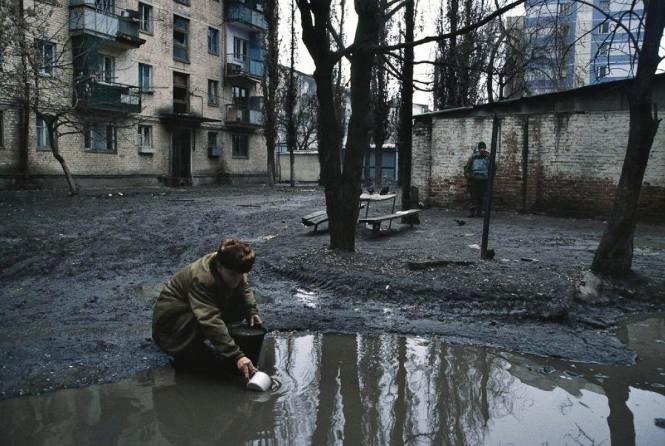
When it came to claiming credit for the kidnap of Shpigun, Salman Rudayev was just one in a string of possible subjects who specialized in the kidnapping trade which included Baudi Bukayev, the Akhmadov brothers, Arbi Barayev, and Abdul-Malek Mezhidov, a follower of warlord Ruslan Gelayev. Only in 1990s Chechnya could one find such a number of people capable of carrying such an outrageous act to high precision. It was aspects like this that earned it the unsavory of title as the most dangerous place on planet earth.
The Third Death of Salman Rudayev
The third death of Chechnya’s Michael Jackson came in February of the year 2000. This time the death was not a mentally ill ruse being spread by Rudayev but was instead being perpetrated by the Russian high command.
The story surrounding the third death of Raduyev stemmed from a rumor that he had betrayed the infamous Mujahideen warlord Ibn al-Khattab by attempting to sell intelligence on his whereabouts to the Russians for a million-dollar ransom. Al-Khattab was the Saudi-born leader of the foreign Mujahidin, a veteran of several Islamic insurgencies, a survivor of numerous assassination attempts, and a very nasty character to antagonize. Raduyev disappeared again during this period which only fuelled rumors of his third death. But like all of the others, the whole story was untrue and he was back on the scene again before long.
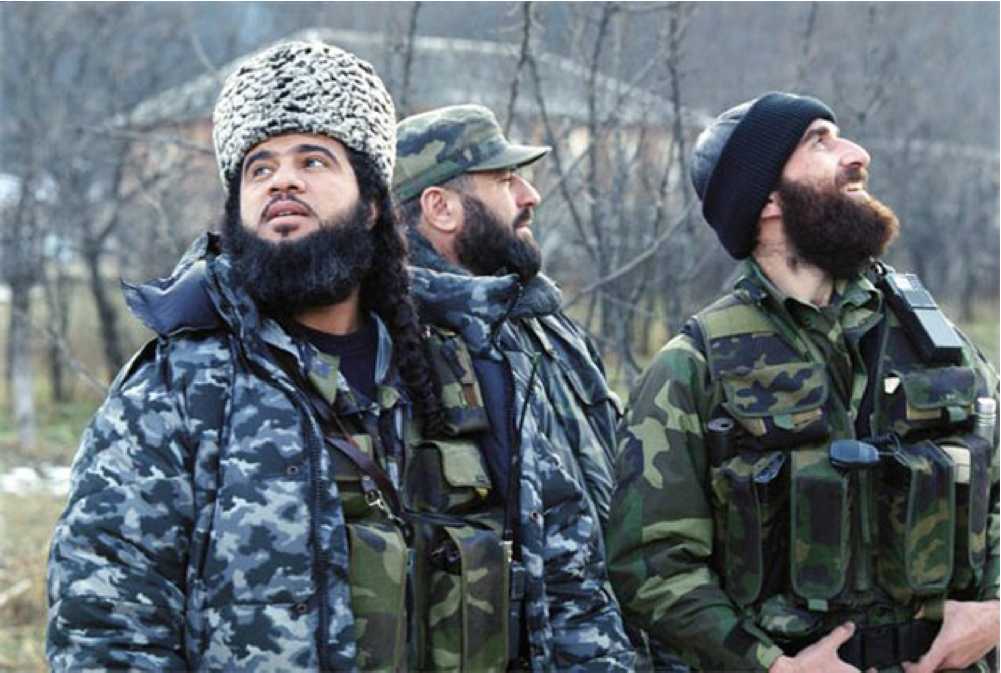
Khattab would later be killed on 20 March 2002, when a Dagestani messenger hired by the Russian FSB gave Khattab a poisoned letter the day before. Chechen sources said that the letter was coated with “a fast-acting nerve agent, possibly sarin or a derivative”. Khattab would receive letters from his mother in Saudi Arabia, and the FSB found this to be the most opportune moment to kill Khattab. The entire operation took six months to prepare. The Dagestani messenger was later tracked down to Baku Azerbaijan and executed under the orders of Shamil Basayev.
The Fourth and Final Death of Salman Raduyev
The most common story about Rudayev’s capture goes as follows: after another skirmish in Chechnya, Raduyev had taken a piece of shrapnel to his already mutilated head. He urgently required medical treatment and was transported out of Chechnya. Despite shaving off his hair and beard, his distinctive mutilated face was recognized at the border between Chechnya and Ingushetian by two Chechen arms-dealers who promptly informed the Russians in exchange for the price on his head.
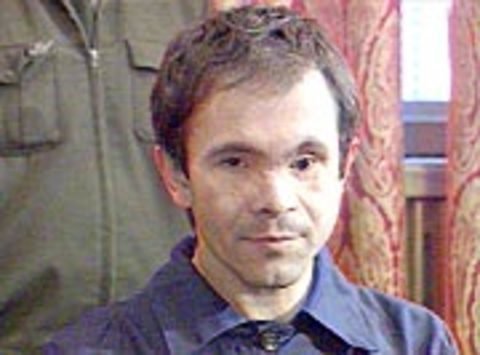
An FSB team swooped on an unarmed and injured Raduyev and apparently arrested him without a struggle before taking him to the Lefortovo Prison in Moscow for a medical examination. The subsequent report claimed that Raduyev was in a good shape of health with no dependence on drugs. This is interesting as during the Chechen Wars the Russians like to claim that drug addiction and degeneracy were rife amongst the Chechens after apparently finding many dead Chechen separatists with heroin in their pockets. The question as to why a combatant would fill his pockets with heroin before going into battle remains unanswered.
The court case of Salman Raduyev was held in Dagestan which was dangerous territory for him due to the number of active blood feuds in revenge for his raid of Kizlyar. His trial was led by Vladimir Ustinov who was then the Prosecutor General of Russia. This was a historic moment in the Russian Federation and had last taken place when the Prosecutor General of the Soviet Union led the case against Gary Powers the US spy plane pilot. By now Raduyev’s hair and beard had grown back so he looked more familiar especially with his iconic mirrored aviator sunglasses, albeit sitting in an iron cage rather than a warlord surrounded by armed men.
Despite the carnage that Raduyev had carried out during his terrorist career, the trial was finished in five weeks. Ustinov took an aggressive approach to the trial and rumors circulated that he was seeking ”exceptional measures of punishment” for Salman Raduyev. This referred to a breach of the moratorium on capital punishment declared by Russia as a condition for membership in the Council of Europe.
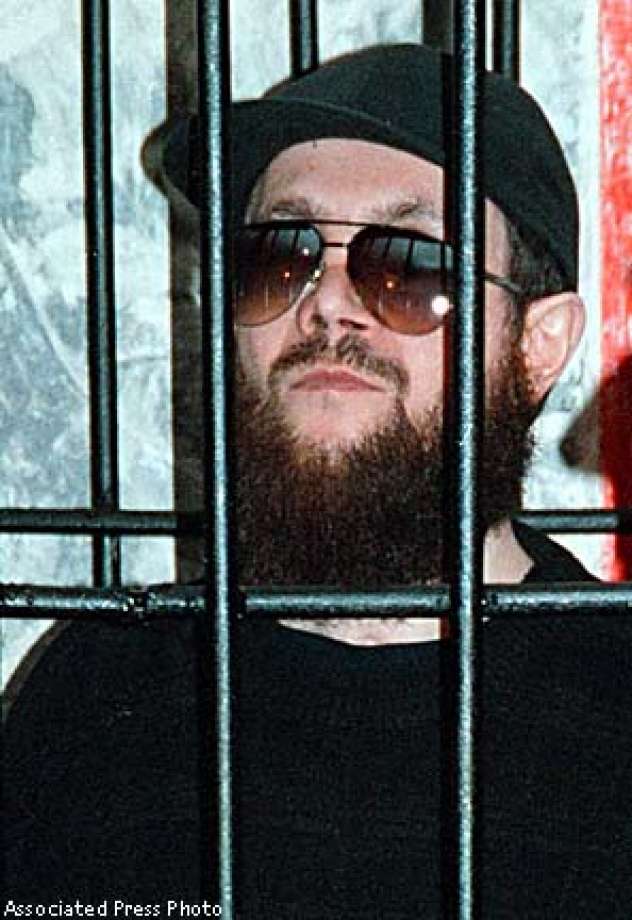
In his defense, Raduyev’s lawyer tried to paint his defendant as a normal person who was just a soldier involved in a war environment who simply followed orders like any other soldier. The trial reached a grim point when the prosecution invited Natalya Rybasova to testify as a survivor of Raduyev’s bomb attack at Pyatigorsk railway station in 1997. She had lost a 3 year old grand-daughter in the explosion and screamed ‘scum!’ at Rudayev in court who callously responded to her with curse words. The court subsequently erupted into unrest which took a while to settle.
Running at well over 700 pages the final verdict for Salman Raduyev took hours to read out and ended in him being handed a life sentence on the edge of Siberia in Solikamsk Detention Centre number 14 in the Ural Mountains.
Salman Raduyev was thrown into solitary confinement where he continued to make enemy-making decisions that had defined his life. He was preparing to submit human rights appeals against his life sentence to the Russian Supreme Court and the European Court on Human Rights in Strasbourg. He also intended to write a book about his life. None of this would ever materialize.
A wolf does not live in captivity.
– Chechen Proverb
On December 14 Salman Raduyev was dead. Russian prison authorities claim he died as the result of a gastrointestinal hemorrhage. Others claim he was murdered by the guards. His body was quickly buried in the prison cemetery before Amnesty International could carry out an investigation into the death. they were assured that no investigation was needed as the warlord had died of ‘natural causes’.
Just like his life was, Raduyev’s death is full of mystery. His murky passing followed by a quick and unobserved burial in a remote grave deep in the Ural mountains only fuel rumors that it was another false death of Raduyev. Some even deny that the man taken to trial by Russia wasn’t even Rudayev. Many still stand by a claim that Salman Raduyev died in the hospital in Urus-Martan back when he was shot in the face. They claimed that the character who returned was a Russian provocateur planted to sow chaos in Chechnya, which he did indeed.
One thing remains true: the Michael Jackson of Chechnya has so far remained dead. He is survived by his wife and two sons who now reside in Istanbul, Turkey. His legacy is one of murderous carnage, audacity, and the ability to seemingly cheat death until he ran out of chances.
References:
The Wolves of Islam by Paul Murphy
The Two Faces of Salman Raduyev by Andrew McGregor for Aberfoyle International Security Analysis


